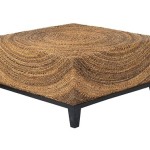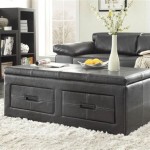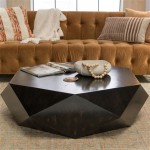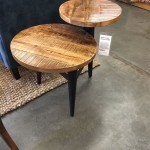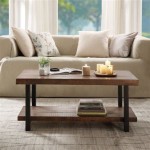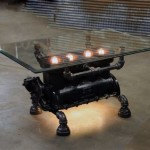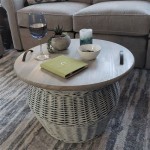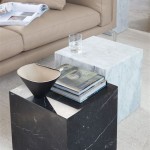Modern Farmhouse Dining Table Ideas
The modern farmhouse aesthetic has surged in popularity, blending the rustic charm of traditional farmhouses with the clean lines and functionality of contemporary design. At the heart of this harmonious blend often lies the dining table. Serving as a focal point for family meals and gatherings, the modern farmhouse dining table requires careful consideration to ensure it aligns with the overall style and provides practical functionality for everyday use.
Selecting the right modern farmhouse dining table involves more than just choosing an appealing piece of furniture. It requires understanding the key elements that define the style, considering the space available, and evaluating the needs of the household. Material choices, table shapes, leg designs, and finishing details all contribute to the overall aesthetic and functionality. This article explores various modern farmhouse dining table ideas, providing insights into the factors to consider when selecting the perfect table for your dining space.
Material Considerations: Blending Rustic and Modern
The materials used in constructing a modern farmhouse dining table are crucial in defining its character. The interplay between rustic and modern elements is often achieved through contrasting textures and finishes. Common materials include solid wood, reclaimed wood, metal, and occasionally, glass or concrete.
Solid wood, particularly options like oak, pine, and maple, forms the foundation for many modern farmhouse tables. Its natural grain and warmth provide a connection to the farmhouse aesthetic. Opting for a lightly distressed finish can enhance the rustic appeal without sacrificing the clean lines associated with modern design. The durability of solid wood ensures longevity, making it a worthwhile investment for a frequently used piece of furniture.
Reclaimed wood adds another layer of character, imbuing the table with a sense of history and sustainability. Salvaged from old barns, factories, or other structures, reclaimed wood often features unique imperfections, such as knots, nail holes, and variations in color, which contribute to its distinctive charm. These imperfections are embraced as part of the material's appeal, adding a tactile and visual interest that cannot be replicated with new wood. When selecting a reclaimed wood table, it is important to ensure the wood has been properly treated and sealed to prevent further deterioration.
Metal accents, often incorporated in the table legs or base, introduce a modern industrial touch. Black wrought iron, brushed steel, or even copper can provide a striking contrast to the warm tones of the wood. The metal elements can be minimalist and geometric, further emphasizing the modern aspect of the design. The combination of wood and metal creates a balanced aesthetic that is both rustic and refined.
While less common, glass or concrete tabletops can be incorporated into modern farmhouse designs. A glass top allows the base of the table to be the primary focal point, showcasing intricate metalwork or a unique wooden structure. Concrete, particularly when polished and sealed, offers a sleek and contemporary look that contrasts with the traditional warmth of wood. These materials are often used in more modern iterations of the farmhouse style, appealing to those who prefer a cleaner and more minimalist aesthetic.
Shape and Size: Functionality and Aesthetics
The shape and size of the dining table are essential considerations, dictated by the dimensions of the dining space and the number of people who will typically use the table. Common shapes include rectangular, square, round, and oval, each offering distinct advantages in terms of seating capacity and spatial arrangement.
Rectangular tables are a classic choice for dining rooms, providing ample surface area for serving dishes and accommodating a larger number of diners. They are well-suited for long, narrow rooms, maximizing the available space. The length of the table can be adjusted to accommodate different numbers of people, and extensions can be added for larger gatherings. When selecting a rectangular table, consider the width to ensure comfortable seating and adequate space for place settings.
Square tables are ideal for smaller dining areas or for seating a smaller group of people, typically four. They promote intimacy and encourage conversation, as all diners are equidistant from each other. A square table can also be a stylish choice for a breakfast nook or a casual dining space. However, square tables may not be suitable for larger gatherings, as they can feel cramped when accommodating more than four people.
Round tables are known for their conversational appeal, creating a sense of equality and encouraging interaction among diners. They are particularly well-suited for smaller rooms, as they have no sharp corners and can be easily navigated around. Round tables can accommodate a surprising number of people, especially when equipped with a leaf extension. When selecting a round table, consider the diameter to ensure sufficient space for place settings and serving dishes.
Oval tables offer a compromise between the rectangular and round shapes. They provide a generous surface area similar to rectangular tables, while also promoting conversation like round tables. Oval tables are particularly well-suited for longer, narrower rooms, as their curved edges soften the lines of the space. They offer a more elegant and refined aesthetic compared to rectangular tables.
Beyond the shape, the size of the table should be carefully considered in relation to the dimensions of the dining room. Allow for at least 36 inches of clearance around the table to ensure comfortable movement and prevent the space from feeling cramped. Measure the room and visualize the table in the space before making a purchase. Consider the placement of other furniture, such as sideboards or buffets, to ensure a cohesive and functional layout.
Leg Design and Finishing Touches: Defining the Style
The design of the table legs and the finishing touches applied to the tabletop and base significantly contribute to the overall modern farmhouse aesthetic. These details can range from simple and understated to ornate and elaborate, depending on the desired level of formality and the overall style of the home.
Straight, tapered legs are a common choice for modern farmhouse tables, offering a clean and minimalist aesthetic that aligns with the modern aspects of the style. These legs can be made of wood or metal and are often painted or stained to complement the tabletop. The simplicity of the design allows the focus to remain on the tabletop and the overall form of the table.
Pedestal bases, consisting of a central support column, offer a more traditional and elegant look. These bases can be made of wood or metal and can be carved or turned to add visual interest. Pedestal bases are particularly well-suited for round or oval tables, providing stability and allowing for comfortable seating without legs getting in the way. They contribute to a more formal and refined aesthetic.
Trestle bases, consisting of two or more vertical supports connected by a horizontal beam, are often associated with farmhouse tables. These bases provide a sturdy and rustic look, often incorporating exposed joinery and natural wood textures. Trestle bases can be made of wood or metal and are often paired with reclaimed wood tabletops to enhance the farmhouse aesthetic.
Metal legs, often crafted from wrought iron or steel, introduce an industrial element to the modern farmhouse style. These legs can be simple and geometric or more elaborate and decorative, depending on the desired aesthetic. Metal legs can be powder-coated or left with a raw, unfinished look to enhance the industrial appeal. The combination of metal legs and a wooden tabletop creates a striking contrast that defines the modern farmhouse style.
The finishing touches applied to the tabletop and base can further enhance the overall aesthetic. A lightly distressed finish, achieved through sanding or distressing techniques, adds a rustic and aged look to the wood. A clear sealant can protect the wood from stains and scratches while allowing the natural grain to shine through. Painting the base of the table in a contrasting color, such as white or black, can add visual interest and highlight the details of the legs.
Incorporating decorative elements, such as metal accents or carvings, can further personalize the table and enhance its unique character. Metal bands or inlays can be added to the tabletop or base, providing a subtle yet stylish detail. Carved details, such as fluting or rosettes, can add a touch of elegance and sophistication. The choice of finishing touches ultimately depends on the desired aesthetic and the overall style of the home.
In conclusion, selecting the perfect modern farmhouse dining table involves careful consideration of materials, shape, size, leg design, and finishing touches. By understanding the key elements that define the style and evaluating the specific needs of the household, it is possible to choose a table that not only complements the overall aesthetic but also provides practical functionality for everyday use.

Modern Farmhouse Dining Rooms Countryside Amish Furniture
:max_bytes(150000):strip_icc()/de0a09_50941abc08ba4185be9559b9bc6c239emv2-97859b4f53504e0db0a5a4c80a0ad4e9.jpeg?strip=all)
32 Modern Farmhouse Dining Room Ideas Worth Copying

Modern Farmhouse Dining Room Micheala Diane Designs

Farmhouse Dining Room Ideas Rustic

Dining Modern Farmhouse Room Inspiration

28 Stunning Farmhouse Dining Room Decor Design Ideas For 2024 Rooms Modern Wall

Farmhouse Dining Room Ideas Rustic

Modern Farmhouse Dining Room Design Home By Kmb

24 Beautifully Rustic Dining Room Decor Ideas Rugs Direct

Farmhouse Dining Room Decor Ideas
Related Posts

